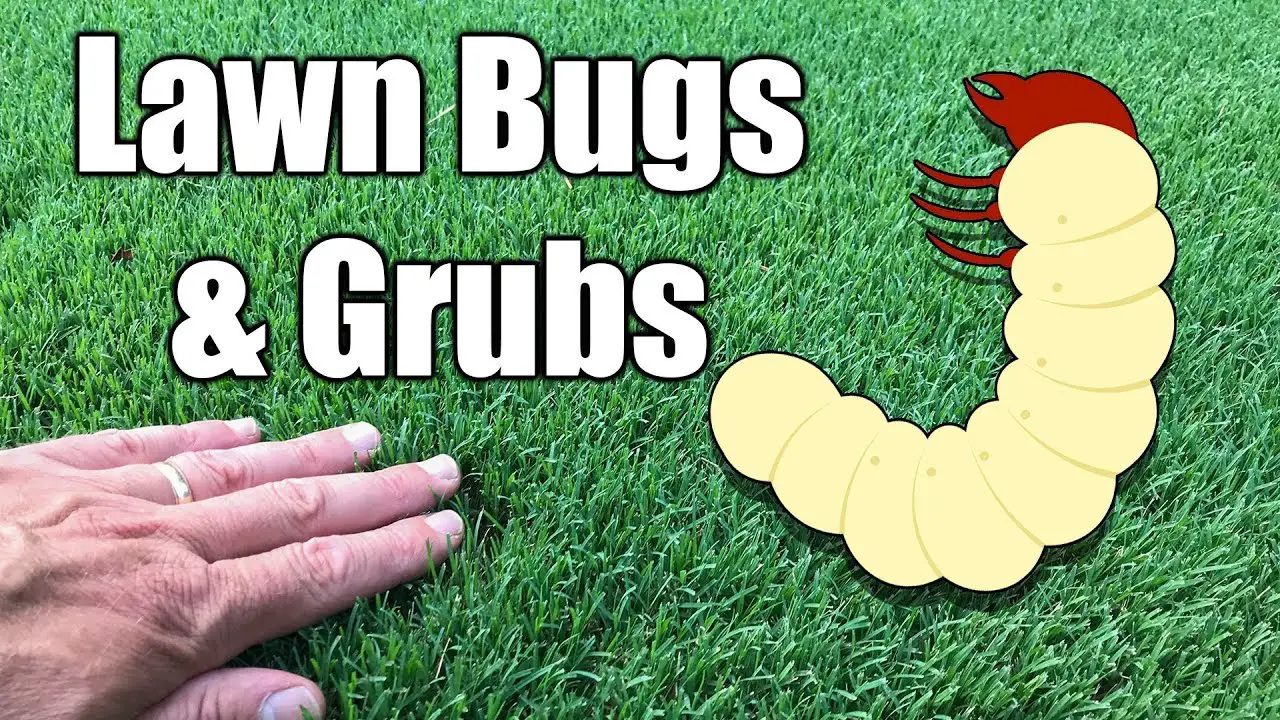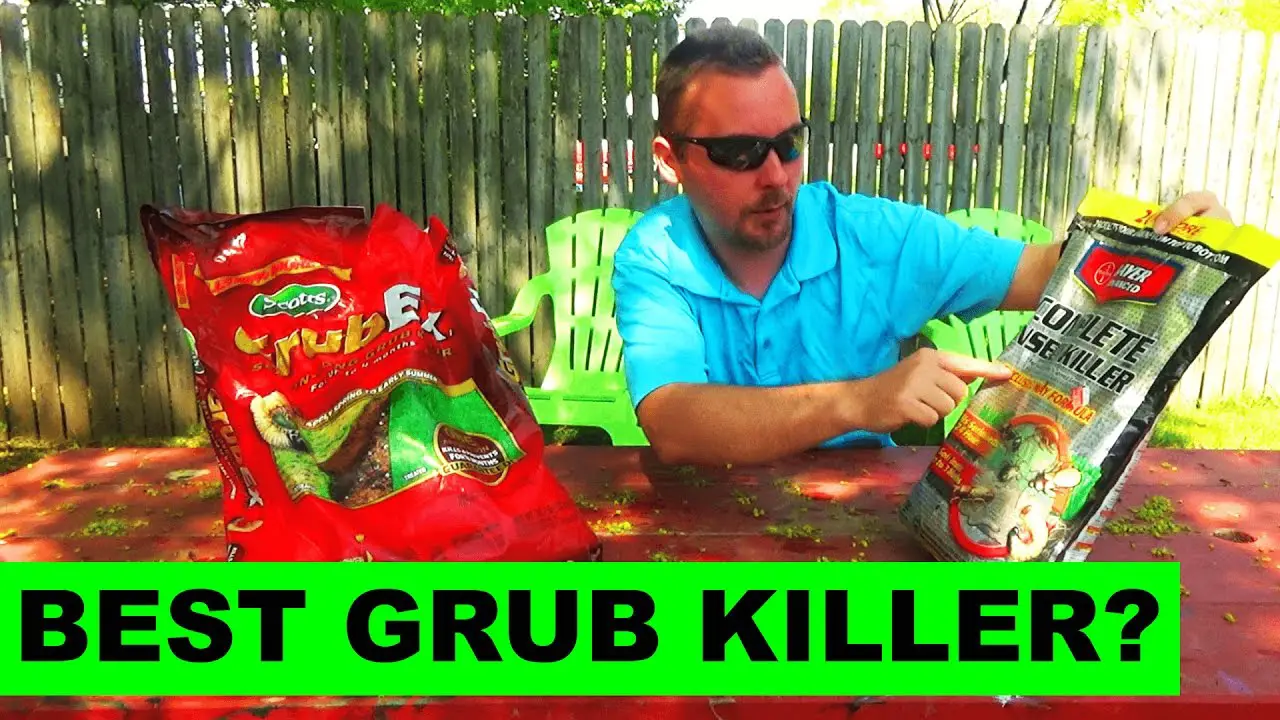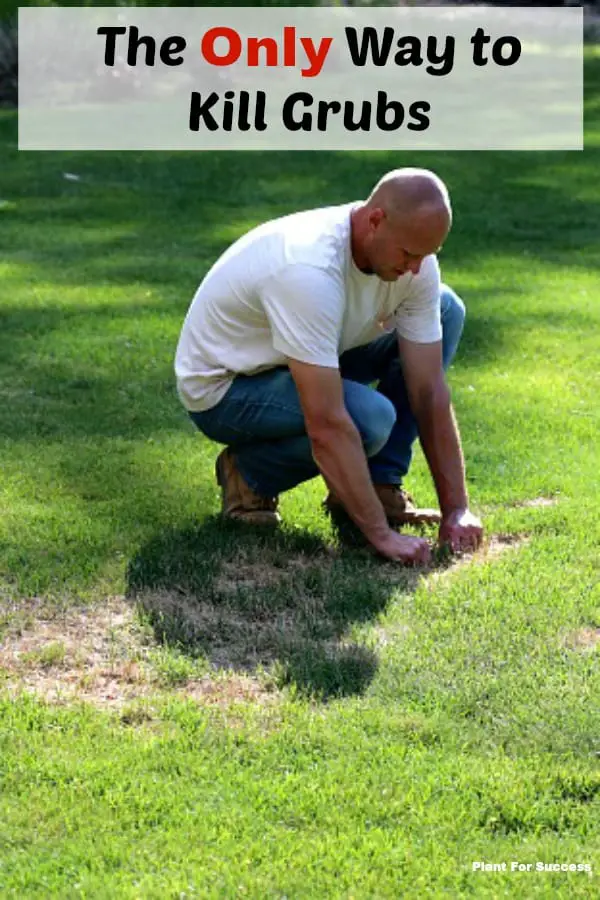Fertilizing Your Lawn A Valuable Ally
When it comes to insect-related plant problems, fertilization can be a very valuable ally. People tend to fear this process these days, but in reality it is still the most potent weapon against certain pests.
The fertilization process itself should be done in two phases for maximal efficiency, the first phase during the fall months, and the second phase in the early springlawn care season.
If possible, putting down a layer of dead leaves after the first phase is ideal, that way you will maximize the fertilizers effect during the winter months.
Make A Homemade Grub Killer With Borax
Before you consider making a homemade grub killer using borax, it is important to note that borax contains boron, and too much boron will kill your grass. If you use a borax grub killer repeatedly on your lawn or in flowerbeds or garden beds, the boron will accumulate in the soil and nothing will grow. So, this option should be used sparingly, if at all.
If you choose to use borax, the simplest recipe is to add one tablespoon of borax with warm water in a spray bottle. Then, use the spray bottle to distribute the borax-water solution on areas where you have found grubs. You will need to repeat this treatment until you have eradicated the grub population, so remember the part about boron accumulating in the soil over time before you choose this option.
Other recipes for borax grub killers include mixing onion, peppers or garlic in the warm water with the borax.
How To Check For Grubs In Lawn
Before you start treating, it is important to check to make sure that indeed there are grubs damaging your lawn. Irregular brown patches of dying grass are the first sign. If you see the patches, lift the turf to check for the grub worms.
Take a shovel and dig a square foot about 3 inches deep and lift the turf to check for grub worms. If you find one or two grubs is normal and healthy, but if you find 5 or more grubs, you have a grub worm infestation that needs treatment to prevent further damage to your turfgrass.
Read Also: Is It Illegal To Mow Lawns For Money
Signs Of A Lawn Grubs
Patchy lawns with brown or bare patches are the tell-tale signs of a lawn grub infestation. Other signs to keep an eye out for include white moths flying around as the sun goes down, white egg sacs on your house as well as an increase in lawn grub predators such as birds or orange/black wasps.
Preferring a healthy lawn, lawn grubs are far more likely to attack a well-maintained lawn. This goes double for all forms of couch grass as they are more prone to infestation. While Sir Walter DNA Certified is more resilient to these pests and usually recovers quicker; it is still susceptible to attack.
How To Get Rid Of Grubs In Lawn Naturally

Introducing beneficial nematodes onto the infested lawn is the best way to eliminate grubs naturally. You can also spray Neem oil onto the lawn to eliminate grubs. It is good to have birds around the lawn as they are natural predators.
Natural ways of control should be preferred as they are harmless, both for you and your pets. You wont be harming the ecosystem in any way too.
Recommended Reading: How To Kill Wild Violet Weeds In Lawn
Nematodes For Lawn Grub Control
Beneficial nematodes can be introduced into the affected lawns to control Grubs. These nematodes work efficiently.
The nematodes munch on the larval forms thus they also prevent future infestation to an extent. Ive tried this method of control and I can say it works.
You can buy such nematodes on amazon.
To Deter Lawn Grubs Dethatch
But what are the most effective options for sustainable-minded lawn owners?
Preventive methods top Shetlars list for fighting grubs nonchemically. I emphasize a lot especially to lawn care and sport field managers to keep the thatch down to a minimum, Shetlar said. His key to this: fertilizing ones lawn with nitrogen only once per year, and doing it very strategically and judiciously, to quote Shetlar, usually in late October, early November.
He also mentions;research;from a University of Kentucky entomologist suggesting you should choose one species of turfgrass over another.
Professor Daniel. A. Potter has conclusively shown that the tall are much more tolerant of grub populations, said Shetlar, who then added, Where Kentucky bluegrass and perennial ryegrass will be damaged with eight to 10 grubs per square foot, the tall fescues usually require somewhere around 12 to 14 grubs per square foot before showing damage.
What about those common organic recommendations for killing lawn grubs online, such as milky spore disease or beneficial nematodes? The commercial milky spore disease is only for Japanese beetles, Shetlar warned. Even then, milky spore disease is a weak pathogen that results in 20% to 25% infection at best.
As for beneficial nematodes, Shetlar said, Theres a very steep learning curve to using the insect parasitic nematodes. They can only be effective when used curatively, and even then, only on small affected areas.
Recommended Reading: How To Get Rid Of Geese On Lawn
How To Control Lawn Grubs
A few grubs aren’t a problem, but if you see lots of them when you turn the soil, take action.
If youve had problems in early summer with beetles, and by late summer dead patches of grass have appeared in your lawn, you probably have grubs. Grubs are the larvae of Japanese beetles, June beetles, chafers, and others. These white, C-shaped grubs feast on organic matter in the soil, including grass roots.
Signs Of Grub Problems
There are several easy-to-spot signs that you may have grubs in your lawn:
- Raccoons, skunks, or moles are digging up your yard. These animals all love to dine on large, mature grubs.
- You can pull back the dead patches on your lawn like pieces of loose carpet. This happens because grubs eat the roots holding the turf firmly in place on the soil.
- Before the dead patches even appear, your lawn feels spongy when stepped on, as it it were freshly laid sod.
To check if you have a grub problem, peel back a square foot of green turf in several areas of your lawn. If you see 6 or more grubs in each area, it may be time for action.
Don’t Miss: How To Change Oil In Toro Lawn Mower
How Many Nematodes Do You Need
Application rates for nematodes vary widely. Some people claim control with very low rates, and others recommend very high rates. One pack of 50 million of our nematodes will treat between 2,500 and 5,000 square feet. If you know you have a lot of Grubs, and you’re concerned about the damage, you’ll want to use the pack to cover 2,500 square feet. If you’re applying it preventatively, and haven’t had Grub problems in the past, one pack of 50 million will probably cover 5,000 square feet just fine.
Will Controlling Grubs In My Lawn Help Control The Garden Beetles That Eat My Plants
Not necessarily, because the adult stage of grubs are flying beetles that can travel to your garden from outside your property. Learn more about these beetles.
Disclaimer: The use of specific brand or trade names in this article is for educational purposes only. The University of New Hampshire does not support the use of one product over others of similar composition, nor does it guarantee the efficacy or quality of any product. The user is responsible for applying pesticides only as directed on the label and in compliance with the law. Product availability is subject to change depending on registration status in the State of New Hampshire and other factors.
Recommended Reading: How To Kill Wild Violet Weeds In Lawn
How To Kill Grubs In Your Lawn
During the late summer and early fall, you may begin to notice lawns turning an unattractive shade of brown in certain unsightly, dying patches. The likely explanation is the grass is being destroyed by hungry, thriving grub worms living below the surface of the lawn. If this has happened in your lawn, there is good news. These pests can be controlled, and your lawn can be restored back to its healthy state by getting rid of grub worms.
Better yet, because of a growing preference for natural gardening solutions, there are now some easy and natural ways to kill lawn grubs and stop them from reappearing next year. This means youll be able to get back to enjoying your yard year-round without concern of nasty grubs eating away at it.
How To Use Dawn Dish Soap For Grubs

Dish soap or any other household soap will work well for this natural formulation. Some people mix in some lemon, but it is not necessary. If you dont have dawn dish soap, you can use an insecticidal soap.
Heres how to use dawn dish soap to kill grubs in your lawn:
Pro tip:;If you want to make the DIY solution more potent, you can mix liquid dish soap with lemon and mouthwash and then spray it all over the lawn. It will act as a grub worm deterrent and killer without causing any damage to your grass.
The right time to treat for grubs in the lawn is between spring and summer. This is the time when the Japanese beetle larvae are very active feeding and developing into adult beetles.
Controlling them at this time means you will stop the damage come the next season.
Don’t Miss: What Can I Spray On My Lawn To Kill Gnats
How To Avoid Lawn Grubs
Although lawn grubs lay eggs randomly, they have certain preferences. As a rule, they tend to lay eggs on sunny, moist lawns, so if the weather is dry and you have well irrigated your lawn, your chances of attracting lawn grubs are very high. On the other hand, if the summer has been rainy and it is not only your lawn, but also your neighbors lawns have received enough moisture; there wont be many grub worms. The thing is that they prefer to lay eggs as far as possible from each other, so if several lawns have equally attractive conditions, they wont concentrate their offspring in one place.
Adult grubs lay eggs in the soil during the summer. Once the grubs hatch, they feed on plant roots and descend deep into the soil once it becomes colder, to spend the winter there. In the spring, grub worms return to the surface and keep feeding on the roots until they become ripe. The biggest damage is caused from mid-September to November or from March till the beginning of May.
Make Your Lawn Less Interesting To Grubs
Lawn grubs are actually quite discerning and prefer some grass types to others. Couch and Kikuyu lawns are more prone to grub infestation than Buffalo grasses, like DNA Certified Sir Walter grass. If youre investing in new turf, then this is something to consider. Be careful when you fertilise as lawn grubs will see this as an invitation to move in and make themselves at home. This is especially important around January and February while the climate is typically very warm and wet. Lawns that require little in the way of fertiliser such Sir Walter Buffalo grass comes to mind, which will be much less appealing to grubs.
Recommended Reading: Parts For Murray Push Lawn Mower
Top Yard Tools I Use:
| Kill Lawn Grubs Now! This is what the professionals use when you need to get your lawn back.You can apply merit yourself and save 400%. You can check it out on . Merit works 10x better than GrubEx or cheap Big Box brands. |
| Kill Grubs naturally This is a great organic;grub treatment that kills grubs naturally. It is very effective and;will not kill your earthworms. I have had much better results with milky spore than with chemicals.; |
| Grass seed that grows!Kentucky Bluegrass seed mix designed for full sun and light shade, with a fine-bladed texture and medium drought resistance . |
| Kill crabgrass now! Yard Mastery Granular Pre Emergent Herbicide 0-0-7 .38% Prodiamine. This is the professional-grade crabgrass control from the Lawn Care Nut . Available |
| Fertilizer & soil improver. This really works. Turf Builder ThickR Lawn Sun & Shade -3 in 1 Lawn Fertilizer, Seed, & Soil Improver-Thicker, Greener Lawn, |
| Easy to hold shovels, pickaxes or rakes.Breathable lining and leatherMade in Illinois |
| Everyone knows Channellock Pliers are the best pliers you can get. They are rugged and durable and can be passed down to your children once they are old enough for tools. I still have a pair from my dad that is over 40 years old and still works great to this day. They have been in business for over 100 years. |
How Natural Predators Kill Lawn Grubs
Biological predators, like birds, raccoons, moles and more, are an option when it comes to grub control for lawns. You can choose to leave your soil exposed to welcome animals to devour the pests. For example, you can use bird feeders to attract birds to your yard to feast on the grubs. But do keep in mind, animals will dig holes in your lawn, which can cause further damage to your yard.
Also Check: How To Kill Wild Violet Weeds In Lawn
Apply Milky Spore Grub Control Mix Aka Grub Worm Killer
This commercially available method called Milky Spore Disease is especially potent against Japanese beetles. It mostly works as a preventive measure.
Its an;organic compound that attacks larvae of Japanese beetles. It can be applied with a spreader anytime from spring through fall. It suppose to kills grub for 15 to 20 years.
Harmless to all other living things and will not affect birds, bees, beneficial insects, fish, animals, plants, or humans. a 20 Provides up to 7,000 square foot of coverage.
From St Gabriel Organics Milky Spore Grub Control Spreader Mix;features are:
- Organic Compound That Attacks Larvae Of Japanese Beetles
- Apply With Spreader Anytime From Spring Through Fall
- Kills Grubs For 15 To 20 Years, Providing You With The Ultimate Coverage
- 20 lbs provides Up To 7,000 Square Feet Of Coverage
How To Kill Grub Worms Naturally
Grub worms are baby beetles, that when left unchecked will start to feast on your plant roots when the eggs hatch in the late summer and early fall months. This is the best time to try these natural grub control methods before they can cause too much damage to your yard.
During this time the garden and lawn grubs are much smaller and a lot easier to kill and control. Here are the best eco-friendly ways for how to get rid of grubs from your garden.
Read Also: How To Kill Creeping Charlie In Your Lawn
Apply Corrective Grub Control
No matter what your lawn looks like, if you are finding lots of grub activity youll want to apply a corrective grub control application. This is not the same material used earlier in the year for prevention. This granular material is a quick-control material with little to no residual activity. You will need to water it in thoroughly. Remember, those grubs are down a couple inches below the grass, so youll want to dissolve the granular material and get it down there to work. Water it in as soon as possible. Some materials start to lose their effectiveness if not watered in within 24-48 hours.
How To Choose And When To Apply Grub Control Products For Your Lawn

David Smitley, Terry Davis and Erica Hotchkiss, Michigan State University, Department of Entomology -May 22, 2020
Not all the grub control products on store shelves will be effective this spring. Heres how to choose and use the right one for your lawn.
Be sure the problem is grubs.;Before doing anything, it is important to make sure the problem is grubs.;In the last 10 years, the amount of European chafer damage to home lawns in southern Michigan has steadily decreased to the point where it is unusual now to find populations high enough to damage turf. However, as European chafers and Japanese beetles have spread northward, lawns and other low maintenance turf areas in much of the Lower Peninsula north of Lansing and in the eastern half of the Upper Peninsula are seeing more damage. The outbreak phase where turf damage is common may last five to 10 years.
European chafer grubs may be found in all locations in Michigans Lower Peninsula and in much of the Upper Peninsula. Regionally, European chafers are a much bigger problem than they used to be. In 2002, they were only found in New York, Pennsylvania, Massachusetts, Delaware, New Jersey, Connecticut, New Hampshire, Vermont, Maryland, Southern Michigan, and eastern Ohio. Now it has spread throughout Ohio, Michigan , northern Indiana and into eastern Illinois. It was also reported in Wisconsin in 2013. In Canada, it is a problem in Ontario and Vancouver, so Washington State is on the lookout for it also.
Also Check: How To Grow My Lawn Care Business
Attract Birds To Eat Lawn Grubs
Another counterattack comes from Mother Nature herself, birds. Yes, birds can actually cause quite a ruckus themselves, but overall they are still beneficial to your garden.
You should take measures to protect your seeds from them, but they will also snack on the grubs which is ultimately something we want.
How can you attract birds to your garden? It is easy. Simply put up a bird feeder close to the problematic areas, and let them go to town on it.
This may be a more of a solution that is not very dependable and would be low on my list of remedies!
